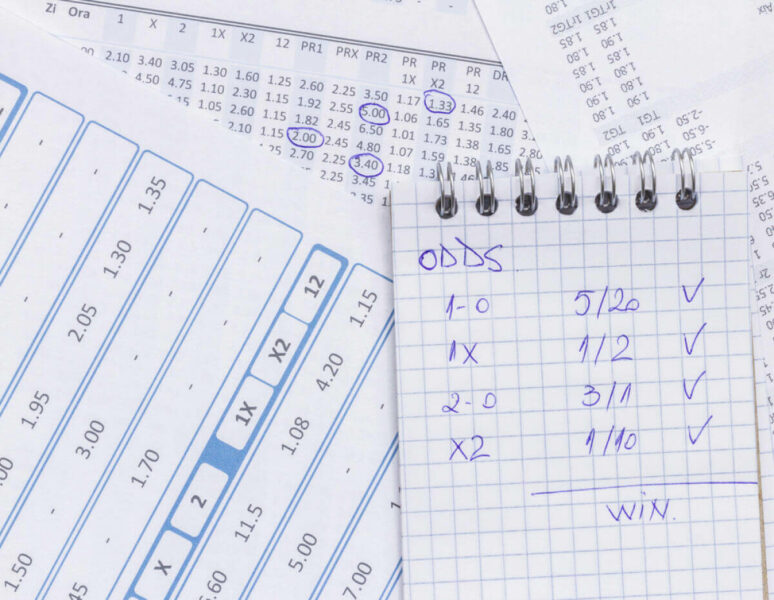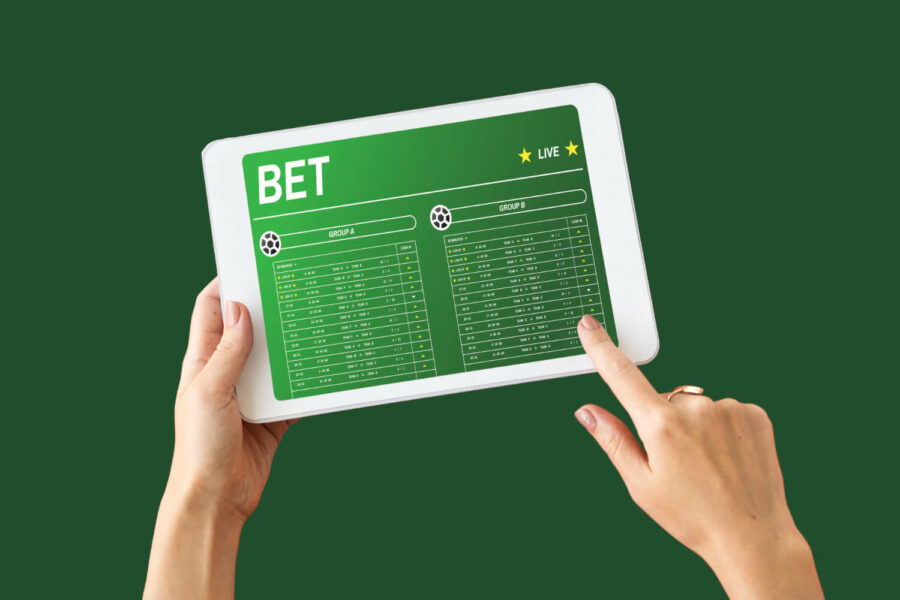What Are the Odds? How to Read Betting Odds and More

Sports betting is one of the most popular forms of gambling, and it offers a great chance to prove that you know as much about your favorite team as you claim. You can bet on multiple professional leagues, including the NFL, MLS, NBA, and Premier League.
Not so long ago, sports betting in the US was restricted to just a small selection of states. But following the repeal of PASPA in 2018, the industry has exploded. The majority of US states (plus Washington DC) have now legalized the vertical in some way, shape, or form.
When you bet on sports for the first time, there’s a lot that you’ll need to keep in mind. First and foremost, you should understand that sports betting odds don’t look the same in all places – though you have the option to customize these without too many problems. On top of that, knowing what sports betting odds actually mean will help you look for better value – as, in some cases, it’s simply not worth picking a particular kind of bet.
In this guide, you will learn everything you need to know about how to read betting odds. We’ll also identify some of the most common markets to bet on, along with discussing what these types of bets mean. By the end of this article, you should have a better understanding of the beginner sports betting aspects.
Betting Lines Explained
One of the most important things you’ll need to remember when betting is that different betting lines exist. Each of these comes up to the same value, but you might find one easier to read than the others.
Fractional Betting Odds
Fractional betting odds are what you’ll most commonly see when betting on sports in the UK. As an example, the number will look something like “2/1”.
When you read fractional betting odds, 1/1 stands for “Evens”. If the second number is bigger than the first (e.g., 5/6), it means that the bookmaker believes an outcome is more likely than not. On the flip side, the first number being larger than the second – e.g., 13/10 – means that it’s less likely to happen.
The bigger the difference between the two numbers, the more or less likely a result is to happen. For example, a team that’s 50/1 to win means that it would be a huge upset. One example of a huge result coming in was when Leicester City – priced at 5,000/1 – won the 2015/16 English Premier League.
On the flip side, a team that’s 1/50 to win a game is almost nailed on to do so. You’ll often see such odds in cup competitions and international events when the quality between competitors is broader than in a league competition.
Decimal Betting Odds
If you’re based on the European mainland, you’ll probably be more accustomed to decimal betting odds than fractional ones. For decimal betting odds, Evens starts at 2.00.
When the number drops below 2.00 (e.g., 1.95), an outcome is deemed more likely to occur than not. On the other hand, a number higher than 2.00 – e.g., 9.75 – would be considered a lower likelihood.
Money Line Betting Odds
US sports betters are probably going to be more accustomed to Money Line bets, which are also known as American betting odds. Money Line bets start at +100, which would be the same as Evens or 2.00.
If you see a number greater than 100, the bookmaker believes that the outcome is less likely to occur. On the other hand, a with a minus would mean that your bet has a better chance of landing. For example, 2/1 would read -200.

See Also: How Long Does an NFL Game Last? + Other Useful Things to Know
How to Read Betting Odds
Once you’ve understood the basics of different betting lines, it’s important to know how to read betting odds from a monetary perspective. As we mentioned, the value of your bets won’t increase or decrease because you’ve picked a different betting format; the only thing that changes is the number you see on the screen.
In this section, we’ll break down the winnings you could expect to earn from different betting odd formats.
How to Read Fractional Betting Odds
First, let’s start by looking at how you can read fractional betting odds.
In some instances, you’ll see “Evens” mentioned on a betting odd. This is sometimes also styled as “EVS” or “1/1”, but they all mean the same thing. Basically, if your bet is a winner, you’ll receive both your stake and the winnings – and both are the same amount.
Here’s an example:
- $20 stake on an EVS bet = $40 return (your stake + $20 profit)
If you see odds that say 1/2, on the other hand, you’ll receive your stake plus a profit valuing half of your stake.
- $20 stake on 1/2 bet = $30 return (your stake + $10 profit)
1/4 returns your stake plus a quarter of your profits, and so on.
On the flip side, a 2/1 bet would return your stake plus double the profits. For example:
- $20 stake on a 2/1 bet = $60 return (your stake + $40 profit)
Naturally, your winnings are higher if you choose bigger odds. But at the same time, you should balance this with considering the likelihood of a result.
Here’s an example of a long shot:
- $1 on a 100/1 bet = $101 return (your stake + $100)
How to Read Decimal Betting Odds
If you place a bet at 2.00, it’s the same return as something that’s EVS. Things might initially get trickier to read if you aren’t a great mathematician elsewhere, but we’ll try to make things easier for you to understand here. Once you understand how these odds work, it’s actually quite simple to grasp.
For bets that are 1.50, they work in the same way as 1/2 in decimal betting. So, $10 would return $15 (your stake +$5 profit).
On the flip side, 3.00 is the same as 2/1. So, $10 would return $30 (your stake + $20 profit).
Other conversions to fractional bets are as follows:
- 1.01 = 1/100
- 4.00 = 3/1
- 1.91 = 10/11
- 2.20 = 6/5
- 1001 = 1,000/1
How to Read Money Line Betting Odds
For Money Line betting odds, you already know that +100 is the same as 2.00 or EVS. With that in mind, the returns for your bet are identical to those.
Here are some other conversions you should keep in mind:
- 2/1 (3.00) = +200
- 1/2 (1.50) = -100
- 8/11 (1.73) = -162.5
- 50/1 (51) = +5,000
- 1/100 (1.01) = -10,000
Odd Payout: How Do You Maximize Your Winning Potential?
In essence, every betting odd represents the probability of a result coming in. With that in mind, some people might think that the best idea is to go solely for long shots and hope that they come in. Meanwhile, others might think that going for bankers is a better strategy.
Neither of them are good options, to be honest. If you go on Twitter on a Saturday or Sunday evening, you’ll see plenty of soccer fans lambasting a team that they thought was a banker for ultimately letting their bet down.
What should you do, then? Well, a bit of common sense will have to apply here. You can find good value within bets that lie between EVS (2.00 and +100), and those going from 2/1 (3.00/+200) down to around 8/15 (1.53/-187.5) in the opposite direction.
However, there are some potential risks to keep an eye on. If you see a big team with relatively high odds (e.g. 6/5), it might be because they’re playing a weaker team. Alternatively, they might be playing away from home in a game where the potential to slip up is sizable.
You should also use your gut feeling. If you think that a team has the chance of pulling off an upset, it might be worth placing a bet. Similarly, one side that’s in good form could still be undervalued against an opponent that’s better on paper.
See Also: Powerball, How Many Numbers to Win Powerball, Plus Much More
Sports Odds Explained: The Most Common Types of Sports Bets
Okay, so you’ve now got a better understanding of what different types of sports bets mean. Let’s now look at some of the most common types of sports betting odds; we’ll break this section down into bullet points for easier readability.
- Win – Lose – Draw: Bet on whether you think a team or player will win or lose the game, or whether you think it’ll be a tie. In games where overtime is included (e.g. cup competitions), the result at the end of normal time will determine whether your bet won.
- Two and Three-Folds: Two and three-folds simply means that you combine two or three bets and place an overall stake. The amount you win will be the accumulation of those bets.
- Accumulators: These are the same as two and three-folds, but they involve three teams or more. This is a popular bet type for soccer fans in the UK on Saturday afternoons, and they can involve more than one league.
- Both Teams to Score: In soccer, this bet – also known as BTTS – means that you choose whether you think both sides will score or not. The match result is irrelevant, unless you choose a result plus BTTS (or not to score).
- Over/Under: This bet means that you bet on over or under a certain number of points. Again, the final match result is irrelevant – as long as you meet the bet criteria. You can combine this with one team to win and a certain number of points.
- Overall Competition Winner: These are typically tournament-long bets where you choose who you think will win the trophy. For example, you might pick who you think will win the World Cup before the tournament begins.
- Aggregate Winners: In two-legged ties, you can bet on which team you think will succeed over two legs.
- In-Play Betting: In-play betting refers to picking betting odds while the game or tournament has commenced. These will often be different from what you saw at the beginning, meaning you can sometimes find excellent value.
How to Find the Best Gambling Odds
Let’s now round up this guide by looking at how you can find the best odds for your sports betting pursuits.
Think About Leagues You Have Niche Knowledge Within
Some of the more popular leagues will have well-established odds, but you can bet on literally every division these days. In some cases, you might find good value on some of the top teams and players in more niche divisions. If you’ve got a good level of knowledge about a certain league or team, you might want to consider betting on those outcomes.
Look for Sign-Up Bonuses
If you want to improve your odds, you can look for sign-up bonuses. These are especially common before major international tournaments, and you’ll also find them before big games. You can get excellent odds if you know where to look, though you should also remember that many will include a minimum bet.
Consider In-Play Wagering
In-play betting offers very good odds in some cases, and you might be able to find value where you didn’t before. For example, if a team struggles in a game that they should win, you might be able to get something good on them turning things around.
Bet Online
If you bet online, you often have more options. Betting in person means you’re limited to your immediate radius, which can result in not necessarily getting the best possible odds. When betting online, just make sure that you choose websites with valid gaming licenses and secure payment methods.

A Definitive Guide to Sports Betting Odds
There’s quite a lot to learn about sports betting, and you will likely need a bit of time to figure things out. On top of that, you may require a few lost bets before you become more comfortable with placing wagers on your favorite teams and leagues.
One of the most essential things to consider is that you might sometimes see different numbers on varying websites. If you switch between fractional, decimal, and American, these won’t change your potential winnings – but you can choose whichever is easiest for you to read. Most major betting sites will offer something in this respect.
You’ll also find numerous sports betting odd types. However, we recommend starting with simple match winner odds in the beginning. Once you’re more comfortable and know what you’re doing, you can branch out and give different things a go.
This guide has provided you with the basics of learning how to read sports betting odds. You should now, after signing up for an account on your preferred website, have an easier time navigating through everything.
See Also: California Daily Lottery 3, Here’s What You Need to Know











